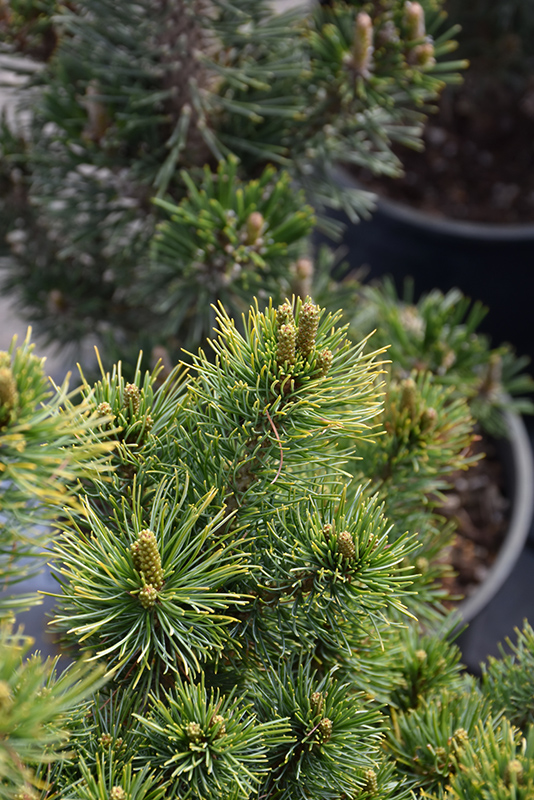Plant Finder
Catherine Elizabeth Japanese White Pine
Pinus parviflora 'Catherine Elizabeth'
Height: 24 inches
Spread: 3 feet
Sunlight:
![]()
Hardiness Zone: 4
Brand: Iseli Nursery
Description:
This attractive variety is quite sculptural when young; with age it becomes a broad pyramid of blue-green, short needles; a great choice for rock gardens, troughs, and small landscapes; remove spent needles from interior to promote good air circulation
Ornamental Features
Catherine Elizabeth Japanese White Pine is a dwarf conifer which is primarily valued in the garden for its interestingly mounded form. It has bluish-green evergreen foliage which emerges light green in spring. The needles remain bluish-green throughout the winter.
Landscape Attributes
Catherine Elizabeth Japanese White Pine is a dense multi-stemmed evergreen shrub with a mounded form. Its relatively fine texture sets it apart from other landscape plants with less refined foliage.
This is a relatively low maintenance shrub. When pruning is necessary, it is recommended to only trim back the new growth of the current season, other than to remove any dieback. It has no significant negative characteristics.
Catherine Elizabeth Japanese White Pine is recommended for the following landscape applications;
- Mass Planting
- Hedges/Screening
- Rock/Alpine Gardens
- General Garden Use
Planting & Growing
Catherine Elizabeth Japanese White Pine will grow to be about 24 inches tall at maturity, with a spread of 3 feet. It tends to fill out right to the ground and therefore doesn't necessarily require facer plants in front. It grows at a slow rate, and under ideal conditions can be expected to live for 60 years or more.
This shrub should only be grown in full sunlight. It prefers dry to average moisture levels with very well-drained soil, and will often die in standing water. It is considered to be drought-tolerant, and thus makes an ideal choice for a low-water garden or xeriscape application. It is not particular as to soil type or pH, and is able to handle environmental salt. It is somewhat tolerant of urban pollution. This is a selected variety of a species not originally from North America.

